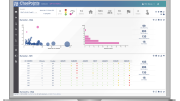ERT, has announced its involvement in a groundbreaking project to enhance drug development and improve the clinical management of mobility loss. The clinical research project, MOBILISE-D, will establish a roadmap to implement new digital tools for analysis of motion to identify, categorise, and monitor patient disability.
Professor Lynn Rochester, Professor of Human Movement Science at Newcastle University is coordinating the MOBILISE-D consortium, which is comprised of clinicians and scientists from academic centers across Europe. “Digital technologies, including sensors worn on the body, have the potential to transform how we assess mobility and identify life-changing conditions,” stated Professor Rochester. “They have the potential to enable medical teams to intervene earlier and offer treatment to extend healthy life, which is especially important considering the ageing population and the growing number of people living with chronic health conditions today.”
“We’re honored to participate in this important project as part of our commitment to improving clinical research and aiding the industry in delivering more effective, personalised healthcare,” said David Elario, Executive Vice President, eCOA, ERT.
ERT scientists are contributing their expertise on scale validation, real-time movement characterisation and combined objective / subjective monitoring systems to the project, which is targeting the development of device-provided outcome measures for Parkinson’s disease, multiple sclerosis, hip fracture recovery, (Proximal Femoral Fracture, PFF), and congestive heart failure.
“New interventions are a key focus, but to accelerate their development, better methods are needed to predict, detect and measure mobility loss and restoration,” said Stephen Raymond, PhD, Chief Scientist, Scientific Affairs at ERT. “We see tremendous value in characterizing the context of motion episodes as well as the significance of mobility limitations to the individual.”





